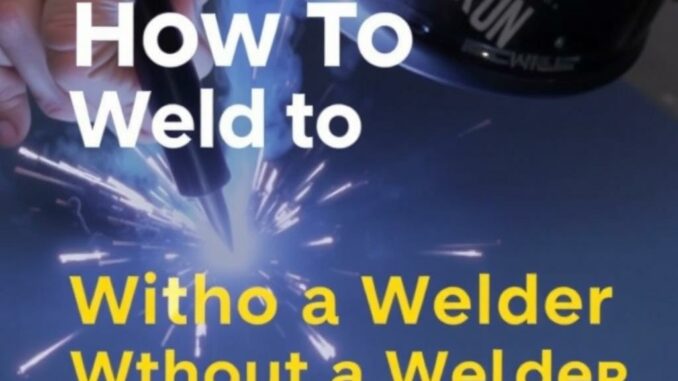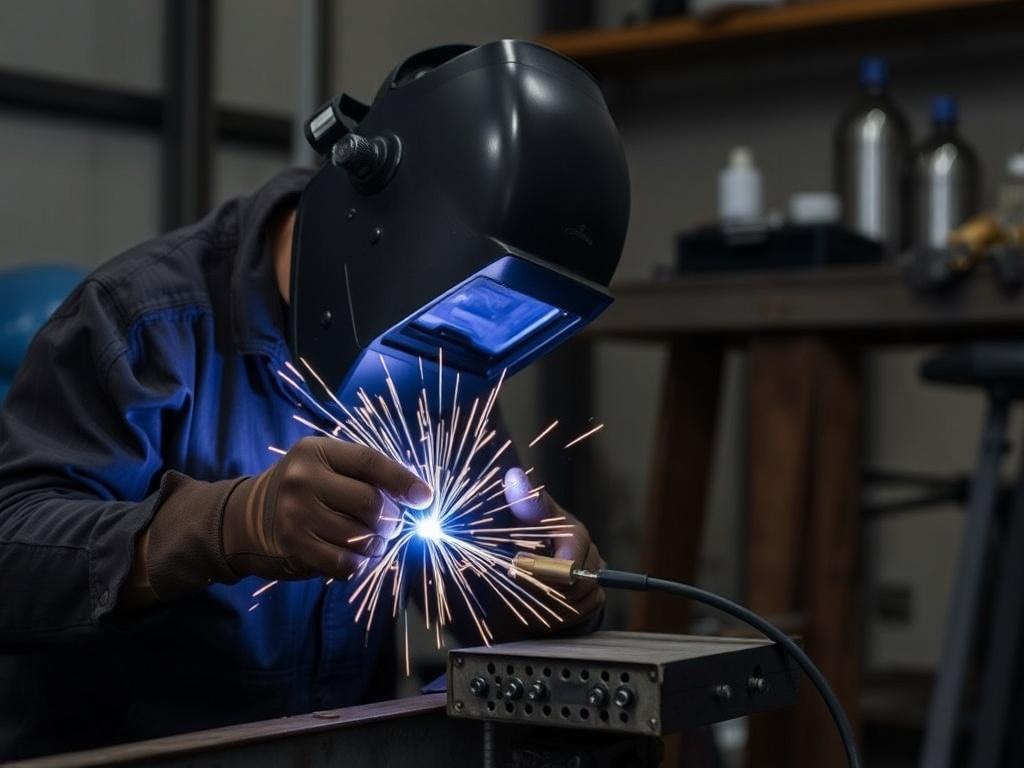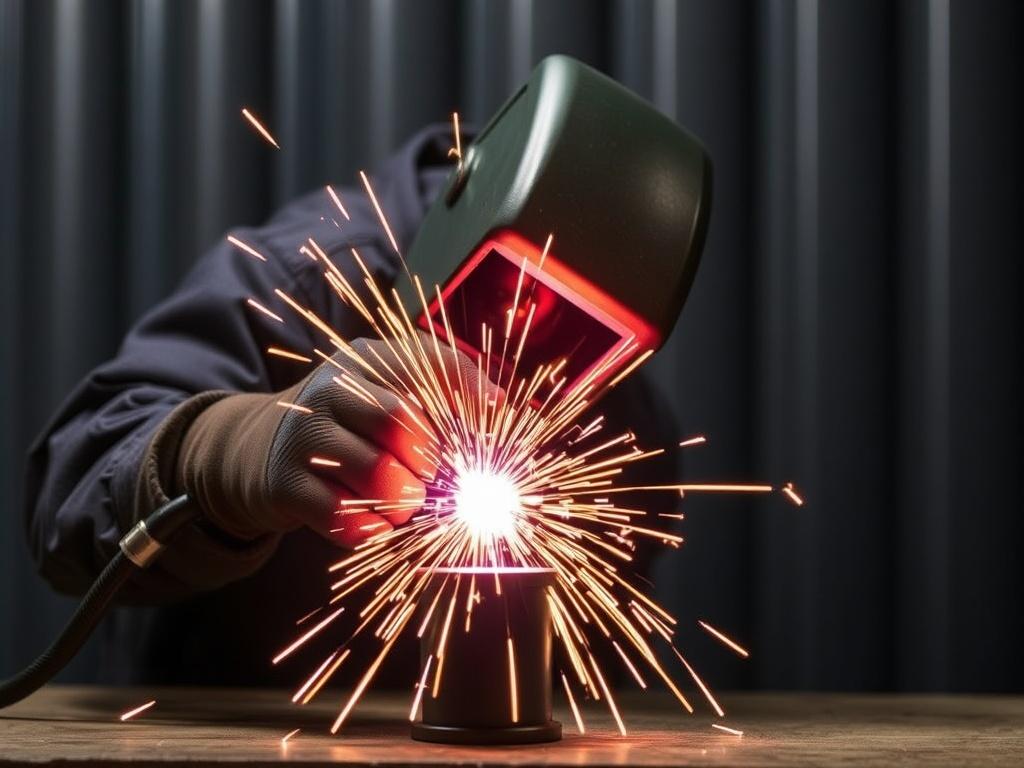
Welding is a fundamental skill for fixing metal objects, building projects, and even saving the day in emergencies. But what happens if you don’t have access to a traditional welder when the need strikes? Maybe you’re stranded somewhere, your equipment is broken, or just cannot get hold of a welding machine. Don’t worry! There are several emergency methods you can use to join metals without a welder. This article will explore practical, creative, and sometimes surprising ways to “weld” without a traditional welding device, ensuring you can keep metal surfaces strong and connected even in tough situations.
Throughout this comprehensive guide, we’ll walk through the science behind these emergency methods and provide step-by-step instructions, along with pros and cons, necessary tools, and safety tips. Whether you’re a DIY enthusiast, an outdoorsman, or just curious about emergency fixes, you’ll find valuable knowledge here to help you when welding isn’t an option.
Understanding Welding and Why It’s Important

Before we jump into emergency techniques, let’s quickly cover what welding is and why it’s so crucial in metalworking. Welding is the process of fusing two pieces of metal together by melting their surfaces and allowing the materials to cool into a single, solid joint. This creates a bond stronger than simple mechanical fastening methods like bolts or screws.
Welding is used in everything from car repairs to construction and even art. The common welding processes include MIG (Metal Inert Gas), TIG (Tungsten Inert Gas), and Stick welding, each using different equipment and heat sources. But every weld requires intense heat to melt metals, and that’s the core challenge when you don’t have a proper welder.
Emergency methods often try to replicate this heat or find alternatives that can physically join metals without melting. So, as we dive deeper, keep in mind that most emergency methods are temporary fixes or specific to certain kinds of metal or conditions.
Key Emergency Methods for Welding Without a Welder
It’s easy to assume that welding without a machine is impossible, but experienced tinkerers and survivalists have developed alternative methods that can be applied during emergencies. Here are some of the main approaches:
- Brazing and Soldering: Using a lower-melting-point filler metal to join two parts without melting the base metal.
- Using a Blowtorch or Propane Torch: Direct heating to join or shape metal components.
- Forge Welding: Traditional blacksmith approach using an open flame or charcoal forge.
- Cold Welding: Mechanically forcing metals together under high pressure.
- Epoxy Adhesives and Metal Fillers: Chemical bonding and fillers to hold parts together.
- Friction Welding: Using mechanical friction to generate enough heat to bond metals.
Each method has its applications, effective metals, pros, cons, and specific safety considerations, which we will explore one by one.
Brazing and Soldering: The Heat-Transfer Solution
Brazing and soldering are among the most accessible methods to join metal without a traditional welder. Often confused but technically different, these processes use a filler metal with a lower melting point than the base metals.
Soldering uses filler metals that melt below 840°F (450°C), usually soft alloys like lead-tin. It is common in electronics but can also join thin metal sheets. Brazing melts filler metals from about 840°F up to 1600°F (871°C), which can produce stronger joints and is used in plumbing and HVAC systems.
This method requires a heat source like a propane torch, a clean joint, and flux—a chemical that cleans oxidation from the metal to help filler flow smoothly.
Materials and Tools Needed
| Material/Tool | Description |
|---|---|
| Propane or MAPP Torch | Provides the necessary flame to heat the metal and melt the filler rod. |
| Filler Rod or Wire | Usually brass, bronze, or silver rods for brazing; lead-tin for soldering. |
| Flux | Cleans the metal surface and prevents oxidation during heating. |
| Fire-Resistant Surface | Safe place to work, like a ceramic tile or firebrick. |
Step-by-Step Brazing Process
- Clean the metal surfaces thoroughly to remove dirt, grease, and rust.
- Apply flux liberally on the joint area.
- Position the two metal pieces tightly together.
- Light the torch and heat the joint evenly until it’s hot enough to melt the filler rod when touched.
- Feed the filler rod into the joint; capillary action will draw it between metals.
- Remove the heat and let the joint cool naturally.
- Clean off any residual flux to prevent corrosion.
Pros: Requires minimal equipment, accessible for many metal types, strong bonds.
Cons: Not suitable for thick metal pieces, joints are generally weaker than traditional welds, requires steady hand and precision.
Using a Blowtorch or Propane Torch to Heat Metal
If you don’t have a welder but do have a propane or butane torch, you can attempt to join or repair metal by direct heating. This method is especially useful for thin metals and small repairs, such as patching holes or softening joints for bending.
The torch can heat metal surfaces close to melting points, allowing you to combine metals with filler rods (similar to brazing) or reshape softened metal.
Steps and Tips for Torch Use
- Safely secure your work on a fireproof surface.
- Light the torch and adjust for a steady flame.
- Heat the metal evenly, focusing on the joint area.
- Work with filler rods or metal sheets to join once hot.
- Allow to cool slowly for stronger bonds.
Remember, safety is critical. Use gloves, goggles, and ensure good ventilation since torch flames can produce harmful gases.
Forge Welding: The Traditional Blacksmith Way
Forge welding is one of the oldest welding methods — practiced by blacksmiths for thousands of years before electricity. It requires heating metals to a bright red or orange glow (above about 1500°F), then hammering them together to fuse. Usually done in a charcoal or coal forge, this method can create very strong welds without modern equipment.
Forge welding differs from other heat methods because it fuses metals in solid state by pressure and heat without melting, which means it’s a difficult skill requiring practice.
How to Set Up a Basic Forge
| Item | Use |
|---|---|
| Charcoal or Coal | Main fuel for the forge |
| Blower (manual or electric) | Increases airflow to boost temperature |
| Firebrick or Metal Container | Contain the fire safely |
| Anvil or Heavy Steel Surface | Work surface for hammering metal |
| Hammer and Tongs | Handling hot metal and shaping |
Forge Welding Process Highlights
- Heat the metal pieces in the forge until they are glowing bright orange.
- Remove with tongs and quickly position the pieces together.
- Hammer vigorously on the anvil to force them to fuse.
- Reheat as necessary, then hammer again for a solid bond.
Keep in mind: Forge welding is a labor-intensive process requiring skill in heating and timing. It’s ideal when no electricity or gas welders are available but does need some equipment prep.
Cold Welding: Pressure Bonds Metal Without Heat
Cold welding, contrary to popular belief, can join certain metals without any heat at all. This method relies on the fact that clean, smooth metal surfaces pressed together under extreme pressure will bond, effectively “welding” themselves. This is more common in softer metals like aluminum and copper and requires specialized equipment.
You won’t find cold welding as an easy emergency method for typical DIYers since the pressure needed can be very high, but it’s still good to know for understanding metal joining science.
Epoxy Adhesives and Metal Fillers as Temporary Fixes
While not welding in the strict sense, modern epoxy adhesives designed for metal can perform remarkably well as emergency fixes. These chemical compounds bond metal surfaces strongly and can resist water, heat, and mechanical stress enough to hold together items until a proper weld is possible.
Popular Metal Epoxies and Applications
| Epoxy Type | Strength | Best Use |
|---|---|---|
| J-B Weld | Up to 5000 PSI | Automotive repairs, small structural fixes |
| Loctite Metal Epoxy | High strength, water resistant | Plumbing joints and aerospace |
| Devcon Plastic Steel | Strong, fast curing | Machine repair, gear fixes |
When using metal epoxy:
- Clean all surfaces thoroughly.
- Mix epoxy components correctly.
- Apply evenly and clamp parts if needed.
- Allow full cure time, which can be several hours to a day.
Though not a substitute for actual welding in most mechanical applications, epoxies are versatile emergency methods when you absolutely cannot weld.
Friction Welding: Heat Through Motion
Friction welding is a unique industrial technique where two metal pieces are rubbed together at high speed under pressure. The friction generates enough heat to soften the metal surfaces so they can be pressed to form a strong joint. Although specialized machines exist, in theory, generating enough rotational friction even by hand tools can bond metals.
This method is rarely practical for pure DIY emergency fixes due to the required force and speed, but understanding it helps when you consider mechanical alternatives.
Practical Emergency Welding Tips and Safety Precautions
When welding without a welding machine, your safety must be the top priority. The alternative methods still generate significant heat, fumes, and involve chemicals or intensive pressure. Here are some helpful tips to keep your emergency welding task safe and effective.
Safety Equipment You Should Have on Hand
- Heat-resistant gloves: Protect your hands from burns.
- Safety goggles or face shield: Block sparks, hot metals, and harmful light.
- Long sleeves and non-flammable clothes: Keep skin covered.
- Ventilation: Work outdoors or in well-ventilated places to avoid fumes.
- Fire extinguisher: Always nearby in case of accidental fires.
Choosing the Right Metal and Surface Preparation
The success of any weld — with or without a machine — depends on how well you prepare the metal. Remove any paint, rust, grease, or dirt, because these will interfere with bonding. Sandpaper, wire brushes, or grinding tools help clean the weld area and improve adhesion.
Also, the type of metal matters a lot. Steel, stainless steel, and cast iron behave differently than aluminum or copper. Some emergency methods work better on certain metals, so do a quick assessment before starting.
Common Mistakes to Avoid
- Trying to weld overly thick metals with brazing or torch methods — results will be weak.
- Ignoring the importance of flux when brazing or soldering — oxidation can ruin joints.
- Not allowing enough cooling or curing time, leading to weak bonds.
- Skipping safety measures leading to burns, inhalation hazards, or fires.
Summary of Welding Without a Welder (Emergency Methods)
To put it all into perspective, here’s a quick summary table showing what you need and how these emergency methods stack up:
| Method | Required Equipment | Metal Types Best Suited | Strength of Joint | Pros | Cons |
|---|---|---|---|---|---|
| Brazing & Soldering | Propane torch, flux, filler rods | Steel, copper, brass | Moderate | Easy, accessible, works on thin metals | Weaker bond than weld, not for thick metals |
| Forge Welding | Charcoal forge, hammer, anvil | Steel, iron | Strong | Very strong, no electricity needed | Requires skill, equipment setup, labor-intensive |
| Cold Welding | Pressing tool with extreme force | Aluminum, copper | Moderate | No heat, clean joint | Needs high pressure, rare for DIY |
| Epoxy Adhesives | Epoxy glue, clamps | All metals (non-structural) | Low to moderate | Simple, no heat, waterproof options | Not true welding, temporary fix |
| Friction Welding | Rotational tools, clamps | Various metals | Strong | Strong weld without melting | Not practical in emergency DIY |
Wrapping Up: The Art and Science of Welding Without a Welder

Welding without a welder might sound impossible, but as you’ve learned, there are several emergency methods that can effectively join metals when traditional equipment isn’t around. Whether it’s using a simple propane torch and brazing rods, setting up a traditional forge, or applying metal epoxy adhesives, knowing these alternative techniques can empower you to handle urgent metal repairs and save your project.
Of course, these methods come with limitations and require caution, but with patience and practice, they become valuable skills in any DIY toolbox. So next time you’re faced with a broken metal piece and no welder in sight, remember that creative problem solving and these emergency options can keep you going strong.
Thank you for reading. Stay safe, stay inventive, and happy welding — even without a welder!
